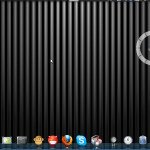Logitech Squeezeboxes are great little network audio streamers — I have a squeezebox Duet, which is much cooler (IMO) than an Apple TV + iPod.
Squeezeplay is the Squeezebox controller / squeezebox touch user interface, and it can run on any computer. You can use that computer as a controller for your squeezebox receiver, or as a complete squeezebox, playing music. If you can get it running on a portable device, you effectively get a new Squeezebox Controller for free.
Unfortunately, even though the Squeezeboxes are based on a GNU/Linux foundation, Linux users don’t get much love when it comes to releases of SqueezePlay… so we have to compile it ourselves.
Here is how to get SqueezePlay working on Ubuntu karmic amd64, but the instructions should apply to other distros. I’ve also tested it on Karmic 32 bit.

